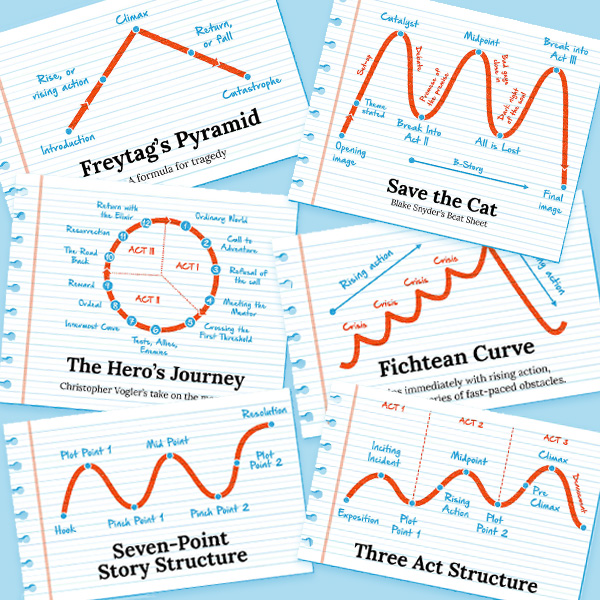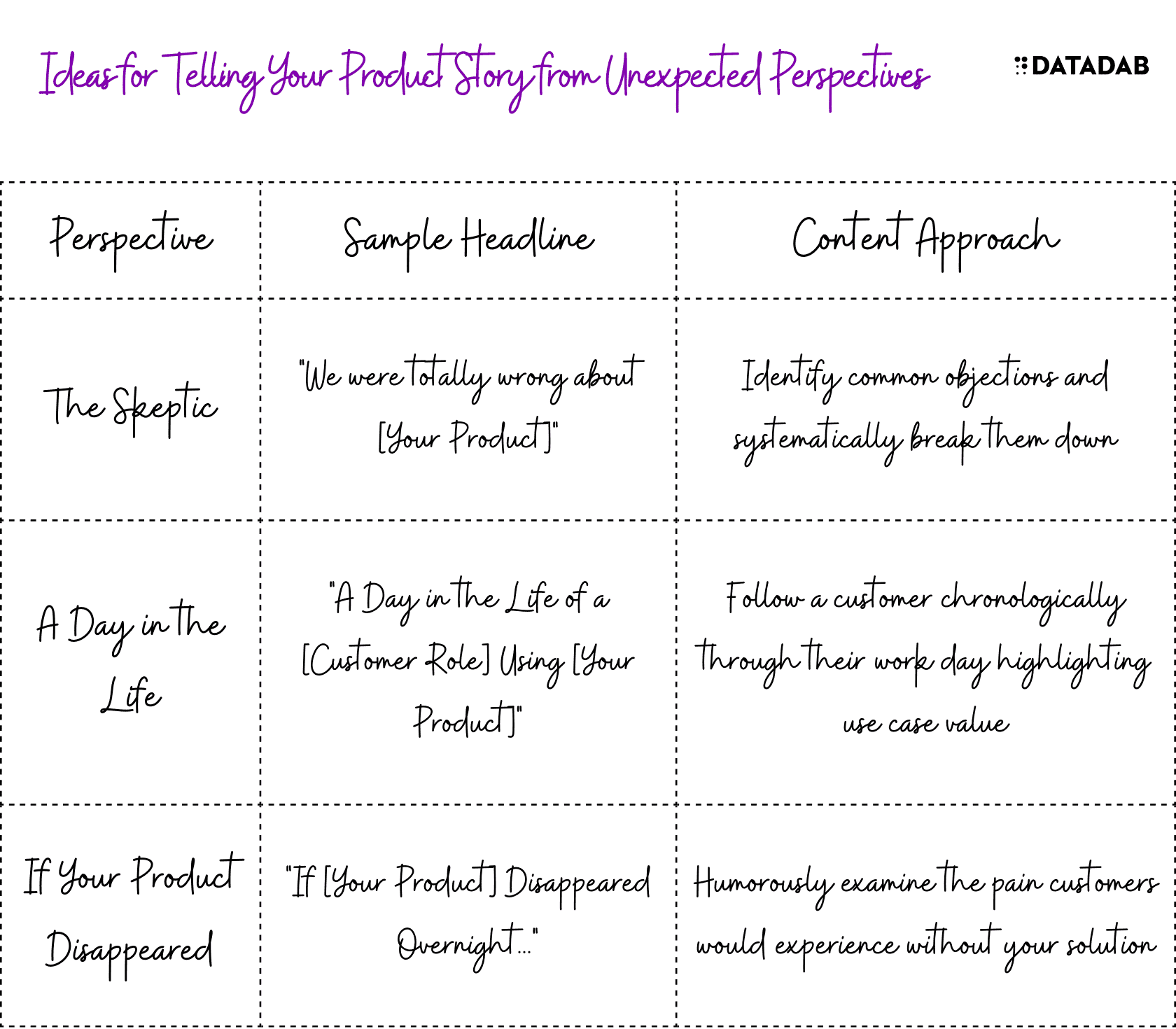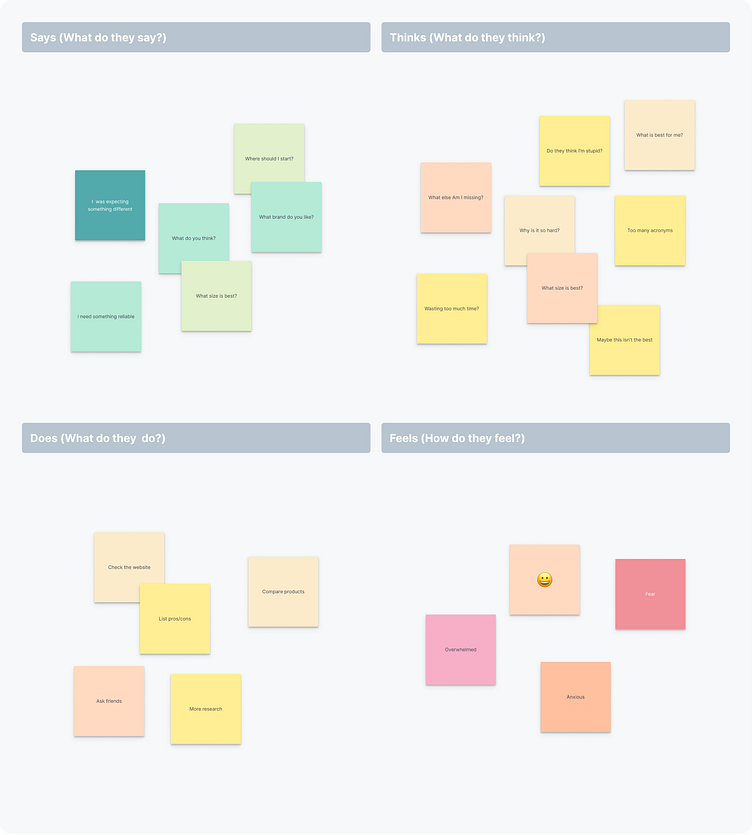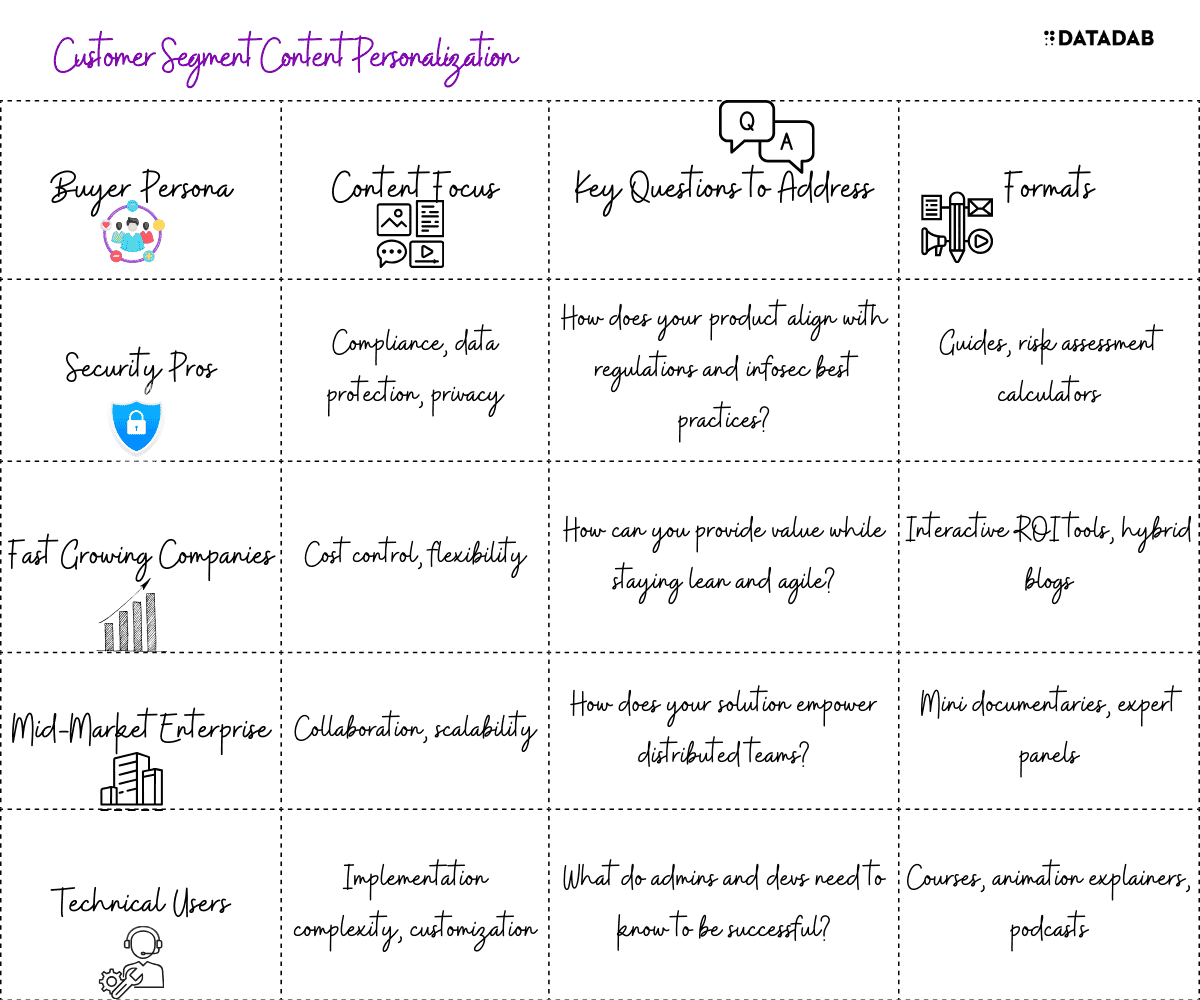Have you ever found yourself stuck in a content rut? Do you feel like every blog post and whitepaper you create for your product is just a slight variation on a theme? It's a common predicament.
There are endless ways to infuse fresh creativity into your content strategy. I'm here to help you discover them.
Your content shouldn't just inform but captivate. Each piece should be a shining beacon guiding your audience to your product. Do not let it be just a drop in the digital ocean. That's the potential of well-executed, innovative SaaS content marketing. You can explore unexpected narratives. You can leverage customer insights and mine your rich data for untold stories. The possibilities are as boundless as your creativity.
In this guide, I'll share some fresh, innovative ideas for your SaaS content marketing. You'll learn how to craft content that resonates deeply with your audience. You won't just highlight your product's features. Instead, you'll tell stories that matter, stories that engage and inspire. We'll explore strategies like tapping into customer co-creation. We'll also dive deep into data for insightful gems. We'll experiment with long-form and evergreen content formats. These formats continue to attract audiences over time.
Let's dive in!
Hook Buyers With Unexpected Narratives
Your typical SaaS content focuses on product capabilities, customer stories or high-level trends. Important stuff, but not very memorable.

To capture more attention, tell stories from surprising perspectives.
Some ideas:
- The skeptics POV: Craft content specifically addressing common objections to your SaaS product category. Show how innovations have rendered the old assumptions moot.
- A day-in-the-life: Follow a customer as they actually use your product during their workday. Get into specifics on how it saves them time or enables growth.
- If your SaaS disappeared: Speculate humorously about the troubles customers would face. Then, highlight how your product alleviates their pain.

Using an unconventional narrative makes your content more unique, shareable and intriguing to buyers. They'll read your posts not just for information but for the experience you craft.

Tap Frontline Experts: Your Customers

Your blog and resource library probably showcase perspectives from product experts, analysts or thought leaders. These are great for establishing credibility.
But don't underestimate the value in customer-created content. Their voices resonate strongly with prospects in the consideration stage.
Some ways to leverage customers:
- Case studies/success stories: A no-brainer, win here most SaaS brands already execute on. Go beyond vanilla success stories by producing a series based around a theme e.g “Fast GrowingTeams Using [Your SaaS}”.
- Video testimonials: Craft a short series of videos capturing raw customer reactions as they describe their experience with your SaaS product. Minimal editing, maximum authenticity.
- Expert Q&As: Interview customers who creatively solved a problem using your product. Share the transcript on your blog.
- User-generated content: Repurpose visuals, testimonials, or product experiences customers organically share on social media.
The more you feature true customers, the more convincing your content becomes.

Exploit Data For Specific Insights
Today, every SaaS platform is flooded with data on product usage, customer behavior, and market trends. Unfortunately, most of this goldmine goes untapped when creating content.
My agency helps clients analyze their data to spot intriguing patterns and story angles. Here's what we look for:
Aha moments: When do customers typically get that lightning bolt moment where they “get” your product value? How can you shorten the journey to this moment with content?
Unexpected use cases: Which lesser-known product capabilities do customers rely on in innovative ways? Tell their stories to showcase wider applicability.
Market niches: What trends or insights emerge when you cut your data by customer segment, role, industry or region? Create content tailored to major niches.
| Customer Segment | Key Needs | Content Angle |
|---|---|---|
| Fast Growing Startups | Control costs | How to keep cloud costs in check while scaling rapidly |
| Mid MarketTeams | Enable collaboration | Features for better teamwork across distributed teams |
| Enterprises IT | Ensure compliance and governance | Capabilities that help pass audits and reassure executives |
You have mountains of data at your fingertips. Put on your analyst hat, comb through it, and uncover insights you can leverage for highly relevant content angles.

Explore Evergreen Long-Form Formats
Let's face it - blog posts have short shelf lives, especially in fast-changing spaces like SaaS and tech. Investing in evergreen long-form content pays off by continually attracting new site visitors from search.
Some evergreen formats I recommend:
Guides/ebooks: Expand a recurring customer pain point into a comprehensive guide. Use sections and visuals to make it skimmable while packing value. Promote with gated access.
Courses/certifications: Structure a 6-8 part video course on a broader topic like “Essentials of SaaS Product Management”. Production quality matters here. Offer a certificate they can display on LinkedIn.
Assessments/quizzes: Help visitors evaluate their preparedness on a topic related to your product value e.g., “How Data Driven is Your Support Organization?” Free personality or skill assessments also attract interest if relevant.
Interactive tools/calculators: For example, a complexity simulator assessing the required effort for an ERP implementation. Turn visitors into users while positioning your solution.
Ratings/indexes/awards: Publish an annual index rating brands across your category on relevant metrics. Offer helpful “insights packages” for those who, score poorly.
Investing in these evergreen assets pays dividends over time as searches, embeds, and links drive recurring visitors.
I'm scratching the surface here - truly, the possibilities are endless if you commit to an innovative content marketing mindset.
What unconventional angles have you tried in your SaaS content campaigns? I'd love to hear and perhaps incorporate it into my next brainstorm for clients!
FAQ
1. What types of content perform best for lead generation in SaaS?
Long-form, educational content like guides, ebooks and courses convert extremely well for SaaS lead gen. These provide tremendous value, build brand trust and authority, while capturing visitor contact info in exchange for gated access. Well-researched guides that help prospects make buying decisions or solve relevant pain points do exceptionally well. Courses that help prospects skill up also convert as they showcase your expertise in areas complementary to your product value.
2. How much should my SaaS company invest in content production annually?
Most B2B marketing experts recommend investing upwards of 50% of your marketing budget into content production. For a $5 million ARR SaaS firm, that could translate into a $500,000 annual content budget. Production costs vary widely based on formats - from basic blogs to high quality animation explainers and documentaries. Allocate budget across different content types and channels - say 40% into evergreen SEO assets, 30% for social and community content, 20% for gated lead magnets, and 10% for multimedia innovation.
3. What's better - in-house content team or outsourced agency partnership?
We recommend a hybrid approach. Maintain a small in-house content team for quicker turnarounds and intimate customer knowledge while partnering with a specialist content agency to produce high quality, innovative assets. The agency essentially becomes an extension of your team. This balances quality with quantity and cost efficiencies.
4. How can we repurpose content across multiple formats?
Say you create an in-depth guide around a topic - you can then extract commentary from experts you interviewed into a podcast discussion, spin off key data into an infographic to share visually, create a quiz based assessment for lead gen, and publish blog posts fleshing out various sections from the main guide. Get creative with repurposing core content from long-form assets into multiple other formats - each tailored for specific channels and audience needs.
5. What's a good content mix across various formats?
We generally recommend:
- 30-40% blog posts - your bread and butter content
- 20% multimedia - videos, podcasts, animated explainers
- 20% educational long-form - ebooks, guides, courses
- 10-15% interactive tools - calculators, configurators, bots
- 5-10% assessments, quizzes, indexes
Track performance across each content type and double down on what converts. But keep testing innovative formats to stay ahead.
6. How much should go behind gated access vs public?
At least 30-40% of your content should be gated behind a lead capture form to generate qualified prospects. As for public access content, this builds awareness, authority and search traffic. Balance both to drive a healthy conversion funnel. Gate access to long-form, highly valuable content while publish other short-form content publicly to engage prospects across the buyer's journey.
7. What tools do you recommend for content creation?
Here are some top tier tools:
- Graphics & Design: Canva
- Video Production: Animaker, Powtoon
- Presentations: Visme, Venngage
- Document Management: Google Docs
- Animation Explainer: Doodly, Vyond
- Podcast Production: Riverside, Zencastr
- Interactive Content: H5P, Genially
- SEO Optimization: Yoast SEO, SEMRush
Evaluate tools for ease of use and output quality fit for business needs.
8. What metrics should we track for content marketing success?
Prioritize metrics like:
- Traffic
- Unique Visitors
- Time on page
- Leads
- Newsletter sign ups
- Content downloads
- Engagement
- Comments
- Shares
- Links
- Conversions
- Trial sign ups
- Sales qualified leads
These cover the full range from top-funnel awareness through the conversion funnel. Track weekly and monthly for trends.
9. How much original custom content is needed vs curation?
We recommend a 70/30 split - 70% original, custom content tailored to your brand messaging and 30% curation of relevant third party articles. Deliver lots of value through custom content while balancing it with curated content for additional perspectives. Just ensure you provide credit and links back.
10. What team structure and skills work best for executing content marketing strategies?
At minimum have a dedicated Content Marketing Manager who can coordinate with sales, product and customer success teams and agencies to map content needs. Add dedicated content creators based on needs - writers, designers, video producers and more. Consider niche experts like a SEO content strategist. The team must have creative skills combined with data-driven precision targeting based on persona needs. Outsource specialities like animated production. Leadership buy-in and sufficient budget allocation is also key for success.






